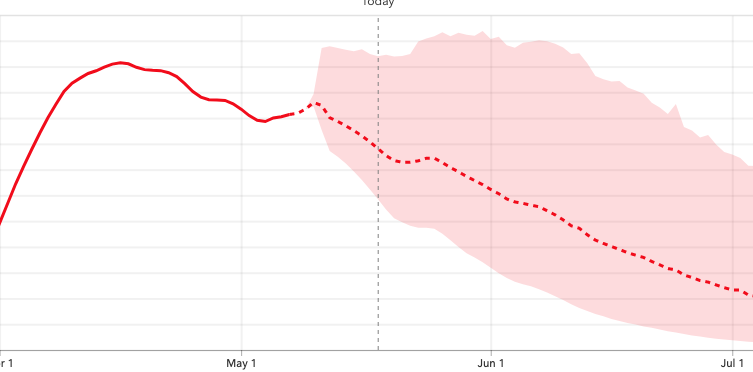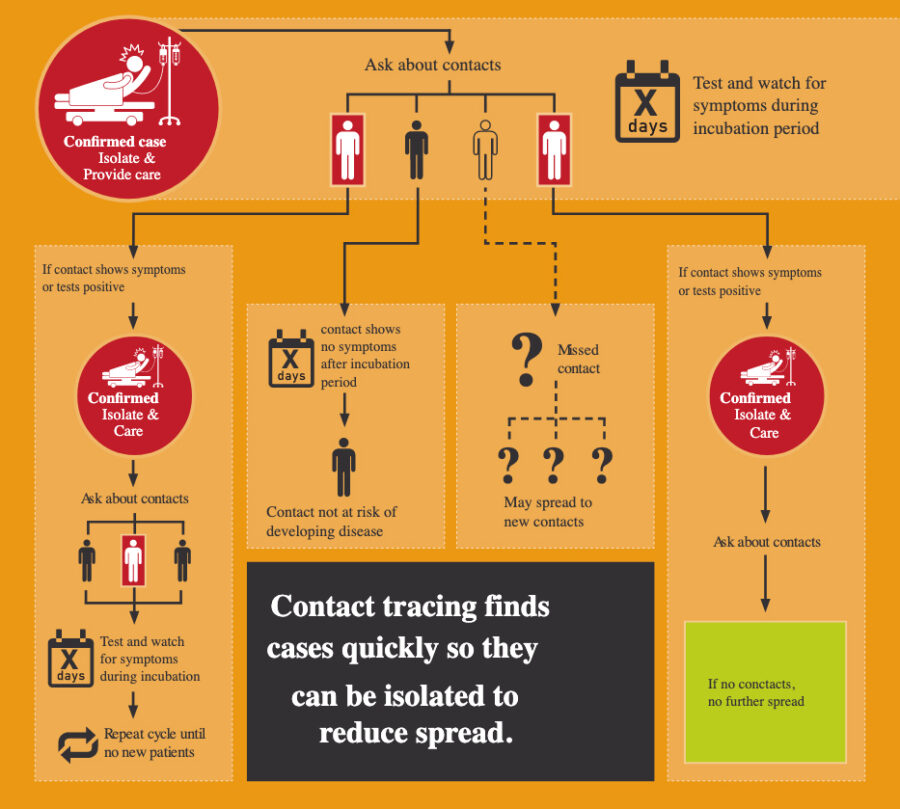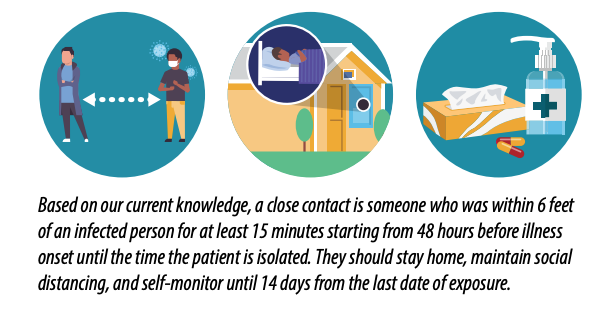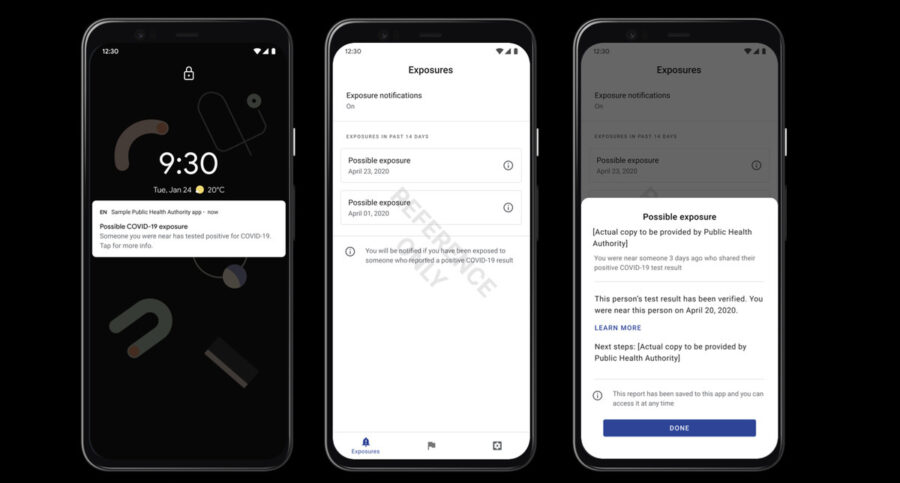Contact Tracing: Couple Under House Arrest After Testing Positive For COVID-19
While it may be new to many of us, the practice of contact tracing actually goes back a long way and it's being touted as the way to beat COVID-19 in the future.
This article is more than 2 years old

The coronavirus pandemic has left us drowning in buzz phrases. You know the ones: “social distancing”, “self-quarantine”, or how about “community spread” and “herd immunity”. The new kid on the block is “contact tracing.” While it may be new to many of us, the practice of contact tracing actually goes back a long way and it’s being touted as the way to beat COVID-19 in the future.
LET’S OPEN UP THE COUNTRY
That is the cry across the United States, though the words used by the general public may be a little harsher. Our economy is in the crapper, small businesses are dropping left and right, unemployment is at a record high, and panic, rightfully so, is beginning to rear its ugly head. The outcry to reopen is tremendous, only getting louder as the days slug by.
Slowly but surely, though, there is an ease beginning to happen. Some counties have been getting the okay to reopen. Some are defying the order so they can reopen. The fear here is that we are going to destroy all the work that has been done to “flatten the curve.” The fear from experts is that many of these cities and counties have not done enough to create a safe public health infrastructure for when COVID-19 spikes, since that is their prediction. So now we turn to contact tracing.
WHAT IS CONTACT TRACING?
Contact tracing has been in use for centuries, making it one of the oldest public health tactics used and when you think about it, it’s much like being a detective. Trained staff interview those who have been diagnosed with COVID-19. The staff gets as much information as possible from the person diagnosed to find out who they have been in contact with and where they have been out in public. From there, the tracer contacts all who have been in contact with the diagnosed person. They will encourage these individuals to quarantine themselves in an effort to stop the spread of the virus.

Lori Tremmel Freeman, chief executive officer for the National Association of County and City Health Officials, described a contact tracers’ job like tracking a “spider web of transmission” as tracers begin to get names of those who could possibly be infected. “It means that as soon as you know of a person who may have a virus or have tested presumptive positive, you work immediately to first isolate that person so they do not spread it further,” Freeman said. “You keep them away from other people, and then you work with that person directly to understand who they have come in contact with.”
ITS RECENT USE
Contact tracing has been in use in the not so distant past. It was used during the SARS outbreak in 2003 and it was also used in the 2014 Ebola virus outbreak. Contact tracing has been used to fight sexually transmitted infections as well as other communicable diseases such as tuberculosis.

As COVID-19 hit pandemic proportions, contact tracing has been used extensively in New Zealand and South Korea to help control the outbreak.
WHY NOW? WHY NOT SOONER?
So, why have we only heard of this recently? Well, the answer goes back to how slow the U.S. has been with being able to test for the virus. The quick spread of the virus and lack of enough tests put contact tracers in the back seat. “You don’t want to be at the height of that bell curve and try to implement a contact tracing system in your community,” Freeman said. “It will be overwhelming and nearly impossible to do at that point.” For this reason, states were forced into the super unpopular shutdowns and stay-at-home orders.
Since not all parts of the country have been decimated, contact tracing can begin to be used effectively as long as testing is available. “In some parts of the country that haven’t seen much infection or transmission, it is absolutely possible for them to do contact tracing now,” Freeman said.
CONTACT TRACING WITH APPS

Tech giants Apple and Google are working together to enable the use of their Bluetooth technology in an effort to help fight the spread COVID-19. Their system, Exposure Notification, will be part of their phone software and will allow pubic health organizations the ability to build apps that would track users who were exposed to the virus.
The main concern with these apps is the privacy of the potentially exposed. There are other companies already developing a contact tracing app or even a stand-alone device that will track the virus. There have also been some countries that have already used such an app.
Ron Rivest, an Institute Professor at MIT and a renowned expert on computer security and cryptology, said in a statement, “We want to be able to let people carefully get back to normal life while also having this ability to carefully quarantine and identify certain vectors of an outbreak.”
He is also part of a group looking into using Bluetooth signals to help track and hopefully minimize the spread of COVID-19. “Instead of an eye in the sky that watches everybody, we want to have the phones that people are carrying around tell how close they’ve been to other people,” says Rivest.
Whether the idea behind the apps will work is another story though. There are experts who are not convinced and even a few surveys in which Americans are very skeptical of this. The public will first need to be convinced that their privacy will not be invaded with these apps and then if convinced, they would have to install said apps on their phones.
It is highly unlikely that these apps would be legally required since, at this point in time, an invasion into one’s health privacy is not legal. Much like the idea of contact tracing itself, the use of these apps will all come down to how much the public, in general, is willing to respond.
CONTACT TRACING LIMITATIONS
Contact tracing has its limitations. It can be an overwhelming task. Given the number of infected, the process can be tedious. Going back to that spider web analogy, one can see how the numbers can quickly spread.
Speaking of spreading, with COVID-19’s ability to go airborne, the search for people on a bus, for instance, sitting next to an infected person or on an airplane can become complicated and sometimes impossible.
It (contact tracing) isn’t much help when cities or counties are under lockdown orders and people are self-isolating. Also, the fact that many of the infected are not showing signs or symptoms, so testing may not be in order for those individuals, will also make it hard for contact tracing.
JOHNS HOPKINS ONLINE TRAINING
According to Crystal Watson, a senior scholar with the Johns Hopkins Center for Health Security, contact tracing “is the best tool we have to manage this in an ongoing way and allow our economy to open up again.” For that reason, Johns Hopkins has started an online course to train contact tracers in numbers that could reach six figures.
Currently, the U.S. has around 30,000 contact tracers. Watson estimates that for us to be successful, we will need at least 100,000 at the bare minimum. Johns Hopkins is offering a free six-hour course to anyone interested in helping fight this pandemic.
NEW YORK IS HIRING CONTACT TRACERS
“One of the most important steps to take to reopen the economy as safely as possible is to create a system of contact tracing. When social distancing is relaxed, contact tracing is our best hope for isolating the virus when it appears — and keeping it isolated.” This came in a statement from former New York City Mayor Michael Bloomberg. He is helping lead the effort in expanding the number of contact tracers in the state of New York, who has been hard hit by COVID-19.
Along with New York governor Andrew Cuomo, Bloomberg announced plans for a statewide program that includes a baseline of 30 contact tracers for every 100,000 residents, and they are expected to have anywhere from 6,400 to 17,000 contact tracers, depending on how many cases the state has.
OTHER STATES ARE HIRING TOO
With New York leading the way and New York Mayor Bill de Blasio confirming Bloomberg and Cuomo’s position by announcing he’s implementing a “test and trace” corps, other states look to join in. The state of Massachusetts has budgeted $44 million so they can hire 1,000 contact tracers. California has plans to higher themselves 20,000 contact tracers.
With as much push and pub contact tracing is now starting to generate, look for these two buzz words to hopefully get more states on board in our on-going battle against COVID-19.
HOUSE ARREST AFTER TESTING POSITIVE
Opponents of contact tracing have begun pointing to a strange case from Kentucky where a couple was placed under house arrest after one of them tested positive for COVID-19. Those opposed to Contact Tracing says this confirms their worst fears about what the practice could be used for.
It happened in Hardin County, Kentucky where Elizabeth Linscott wanted to visit her parents and grandparents in Michigan. Because they were elderly, Elizabeth decided to be responsible and get a COVID test before going, to make sure she wouldn’t expose at risk relatives to the deadly virus. Elizabeth had no symptoms, but she tested positive for COVID-19. That’s where the trouble started according to KMOV news on July 19.
After she received her positive test the hospital gave Elizabeth paperwork to sign. As she explains it, “Pretty much it was I agreed to consent to. I agreed to comply to call the health department if I was to go. I was to call the health department if i was to leave my house for any reason.”
She didn’t like the way the paperwork was worded so she refused to sign and went home. Then she got this ominous text message: “‘Because of your refusal to sign, this is going to be escalated and law enforcement will be involved.'”
On Thursday Hardin County Sheriff’s Department representatives showed up at the door of Elizabeth and her husband Isaiah. Isaiah explains, “I open up the door, and there’s like eight different people, five different cars, and i’m like ‘What the heck’s going on?’ This guy’s in a suit with a mask. It’s the health department guy and they have three papers for us. For me, her and my daughter.”
The couple were then fitted with ankle monitors, against their will. These prohibit them from going more than 200 feet away from their home. They have essentially been placed under house arrest, despite having committed no crime.
Elizabeth claims she’d always intended to self-quarantine she just didn’t like the wording on the legal paperwork the hospital tried to force on her.
It’s worth noting that this story has yet to be confirmed with the county. For now we only have the Linscott’s word on it, and of course photo evidence of them wearing ankle monitors. Here that is…
However it’s notable that the Kentucky county has yet to refute the story, even though it’s nearly 24 hours old.











